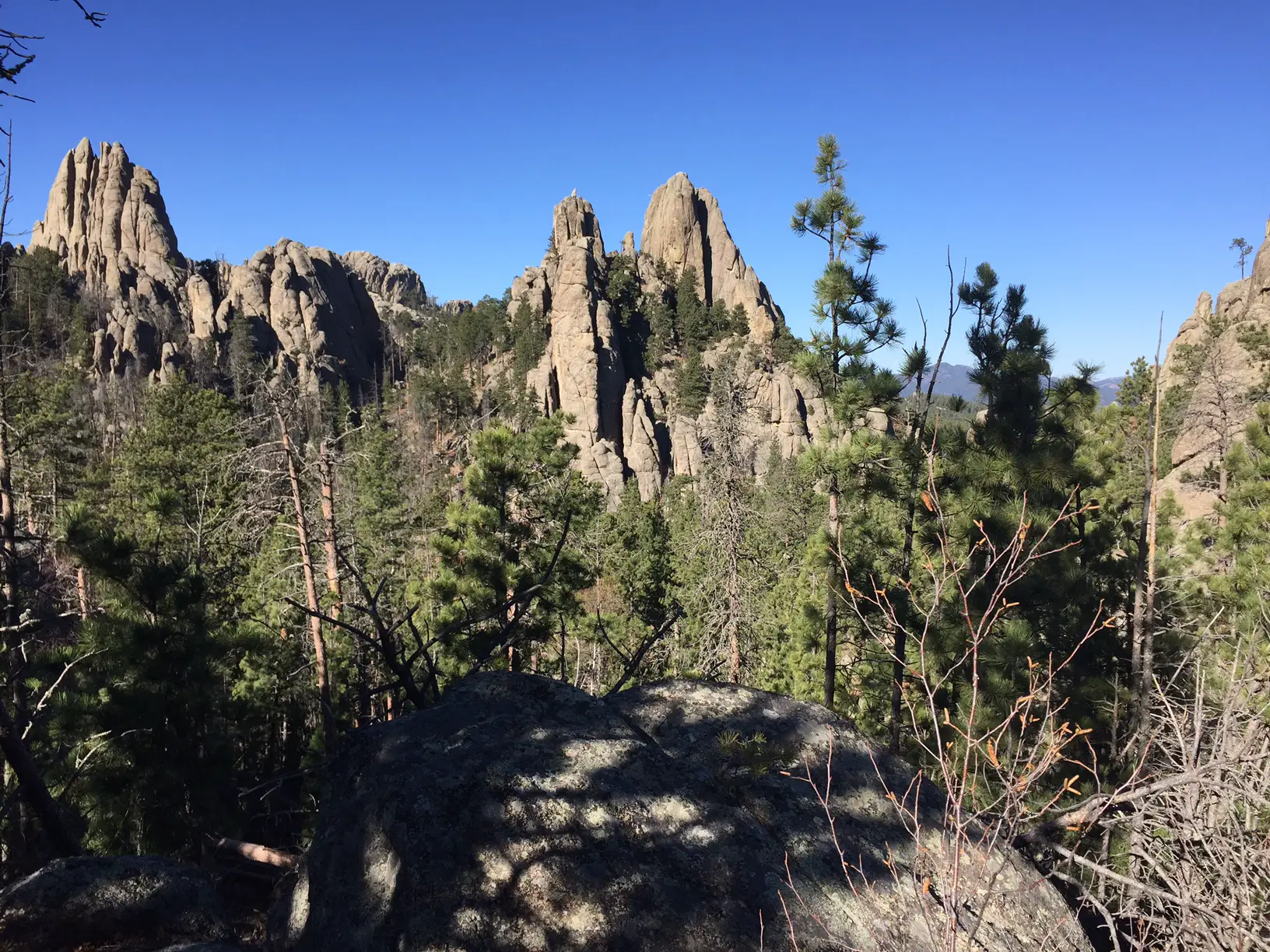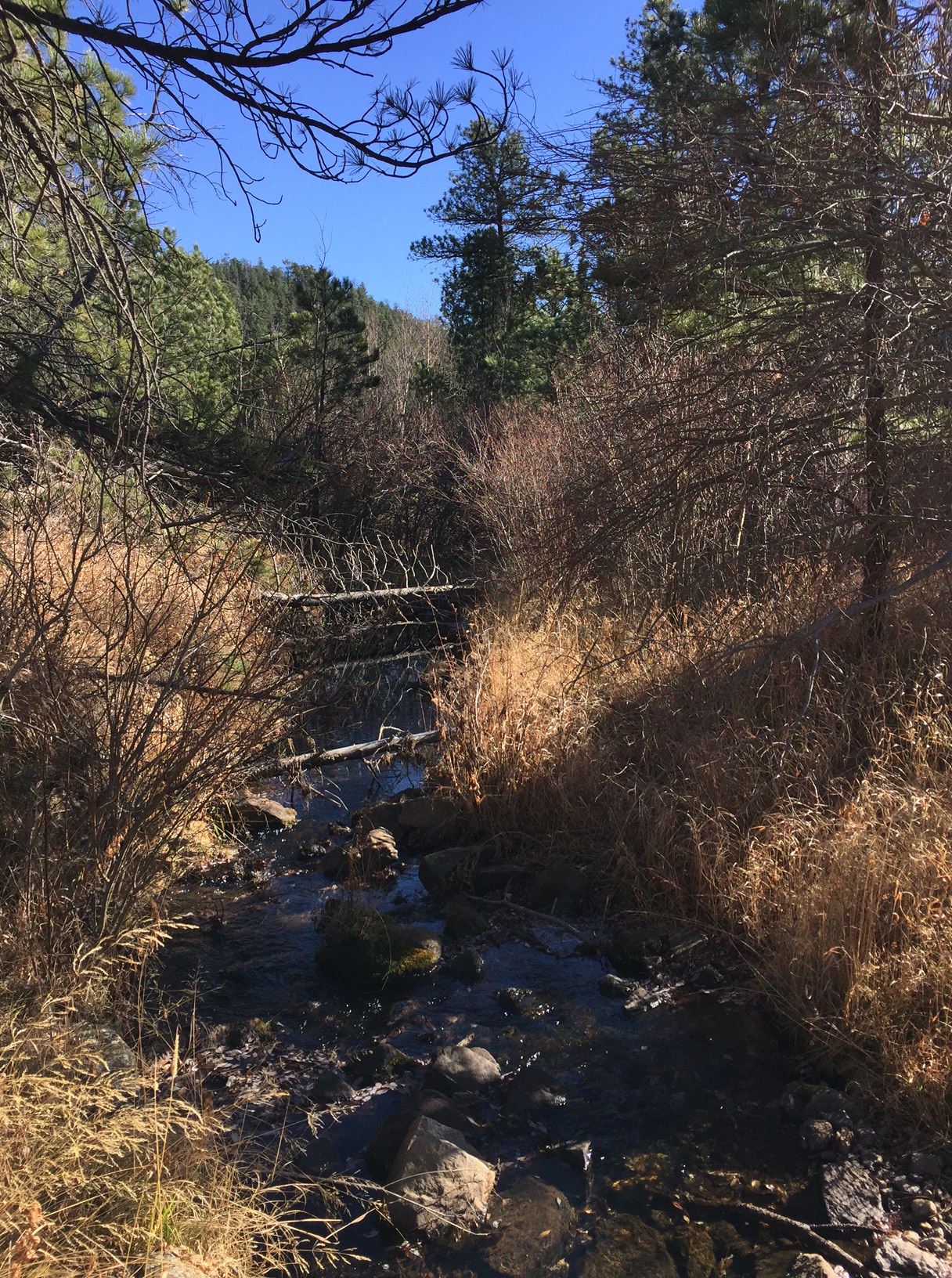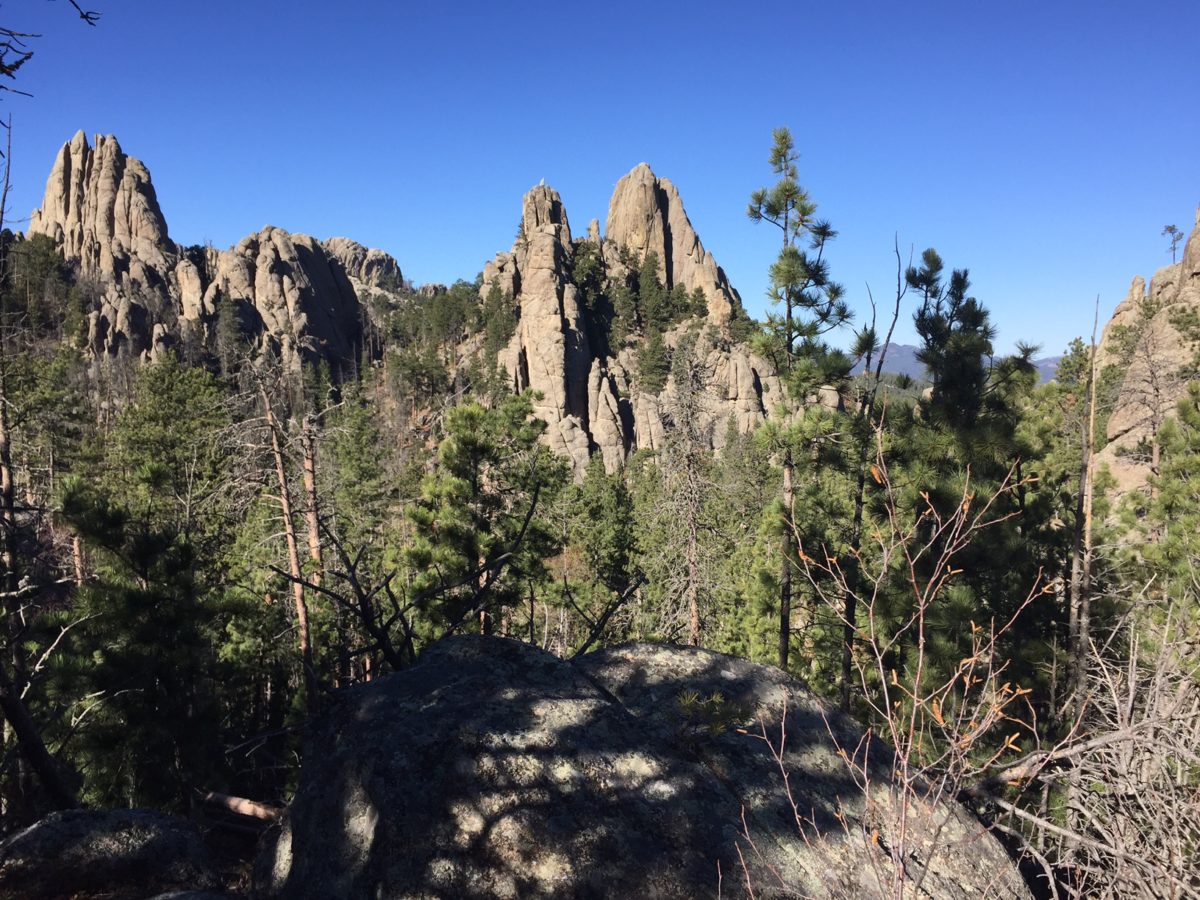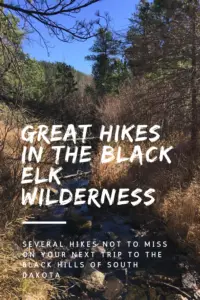The Black Elk Wilderness covers a portion of the central Black Hills, in the Mount Rushmore/Horsethief Lake portion of the Harney range (now the Black Elk range) of South Dakota. There are some great hiking trails that traverse this area!
Hike the Horsethief Lake Trail to Grizzly Bear Creek Trail in the Black Hills
One great option is to begin at the Horsethief Lake Trail. The trailhead can be found at the Horsethief Lake Fishing/Rec area which is located off of Hwy 244, west of Mt. Rushmore.
Note: this is one turnoff east of the drive for the Horsethief Lake Campground.
There is a larger parking area right at the lake. The trailhead is located at a small parking area just to the east of here–there is a sign.
We took the Horsethief Lake Trail (Trail #14) to the Grizzly Bear Creek Trail (Trail #7) which traverses a lovely canyon area and parallels Grizzly Bear Creek for a time.
This portion of the Black Hills is particularly vulnerable to storm damage as it was decimated by the Pine Beetle plague in recent years. Due to this, there are several hazards to watch out for in this area, including blow-down sections of trees and falling limbs/trees if windy conditions are occurring.
What you’ll see hiking through the Black Elk Wilderness
The hike was lovely. Much of it traverses canyons, surrounded on all sides by towers of granite. There are several beautiful, lookout points with views of the surrounding Hills and the prairie stretching far to the east. The trail is in a largely wooded area so it would be fairly shaded in the warmer months, and as you climb there is usually at least a moderate, cooling breeze (that can be downright chilling in the cooler months).
Portions of this trail are open to horses as well so be watchful for the equines (and be careful not to step in what they leave behind).
The portion of the trail we completed was of moderate difficulty, was well-developed, and was fairly wide. There weren’t many rocks/large steps to negotiate and while there were few trail markers, they weren’t needed as the path was evident.
It should be noted that the lower part of the Horsethief Trail is frequently wet and muddy so waterproof shoes/boots are suggested. In the winter/early spring, thanks to snow-melt and the nearby creek it is often extremely icy and slick. This portion of the trail is located in a canyon under a canopy of trees so it doesn’t get much sunlight to melt the ice. We have seen several inches of thick, hazardous ice on this trail in the early spring that required our Yaktrax to navigate safely.
Other trail loops in the Black Elk Wilderness
If you’re up to the challenge, a loop can be made of this trail using the Horsethief Lake Trail to the Grizzly Bear Creek Trail to the Centennial Trail (Trail # 89). This will then eventually take you back to the Horsethief Lake trail almost at the Trailhead (the loop can be completed in either direction). This entire loop would be around 10 – 12 miles. While this is within our ability level, we weren’t sure about the steepness/difficulty of the remainder of the trail, and daylight was growing short so we chose to stop at about the halfway point, have some lunch along the creekside, and return the way we had come.
Numerous trails connect throughout the Harney (Black Elk) range. Depending on your skill level and how long you are willing to commit to being out in the wild you can hike any combination of these, ranging from a simple hike of a few hours to a backpacking trek of several days.
For those non-locals who may be wondering why I keep referring to this area as the Harney (Black Elk) range, I’ll explain. Harney Peak is the highest mountain in the Black Hills (and the tallest east of the Rockies). It stands out among the surrounding peaks of the Harney Range. The Black Elk Wilderness area comprises much of this range.
Black Elk was a Lakota, Holy Man who lived around the turn of the century, the Wilderness area is named after him.* A few years ago, it was decided that Harney Peak would be renamed Black Elk Peak in honor of this great man and as a tribute to the local, Lakota culture. As it has been such a short duration of time since the change, many of the books/maps regarding this local area (and the signs currently posted) will still carry the former name of the mountain/range.
*If you’re a history buff or just interested in American Indian culture, I highly recommend the book Black Elk Speaks by John Neihardt. It’s a biography of the Holy Man’s life based on interviews Neihardt completed with him in his final years. It is a very interesting, fairly objective account of a man growing up in a changing world. It discusses Black Elk’s nomadic life before General Custer and his soldiers arrived and the way this life changed after gold–or as Black Elk called it, “the yellow metal that makes white men crazy”–was found in the Black Hills.
Below are two pics that Mr. Trekker took of our hike:


For more information on other trails available in the Black Elk Wilderness, click here.
Have you hiked this portion of the Black Elk Wilderness? Tell me what you thought of the beauty here in the comments!
Did you enjoy this post? Pin it!
Like what you read here today? Please feel free to leave a comment, like or share this post! Add your email at the bottom of the page, or the sidebar to the right, to be notified when a new post is published. By signing up for the email list, you will also receive a free copy of the Tranquil Trekker’s Top 10 Tips of Trekking Do’s and Don’ts!
You can also follow the blog on social media by clicking the links below!

